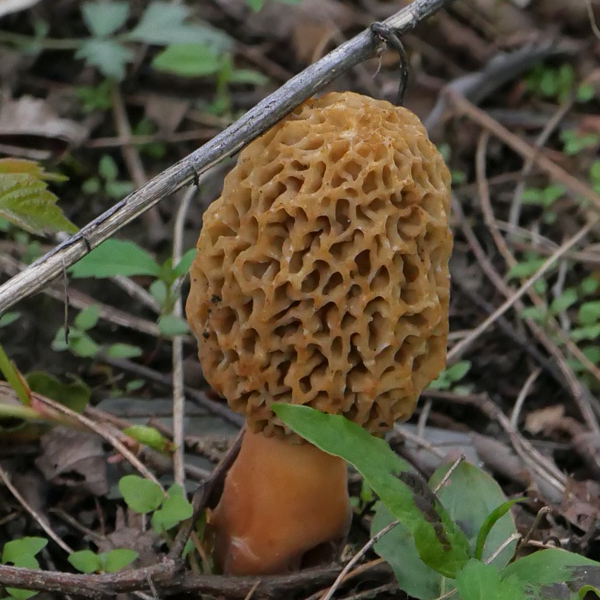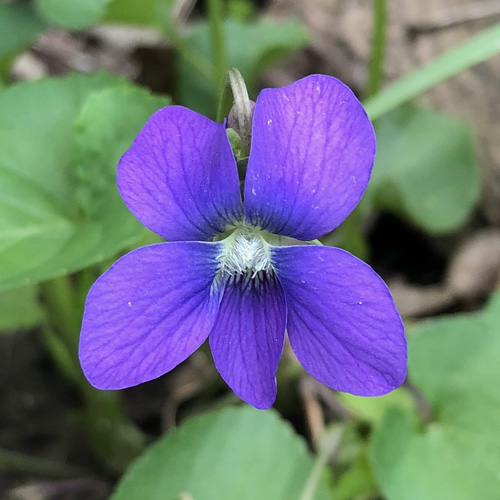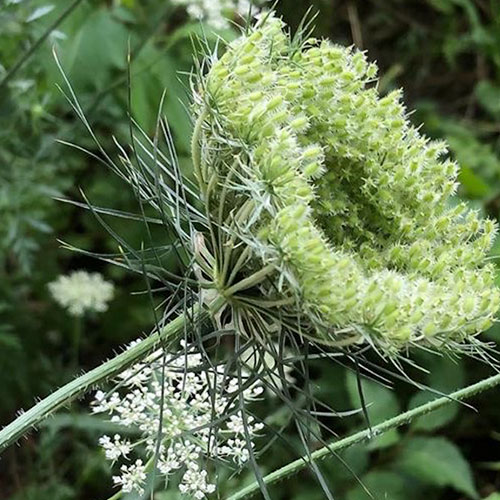Last night, the final supermoon of the year bathed the woods a chlorine blue. If you’re a forager like me, you’re probably used to scanning the forest floor for direction. Last night, you could have looked up. The fifth full moon of the year is also called the flower moon, because it rises when spring plants should be in full bloom in this part of the world—plants like wood hyacinth, crocus, dandelion, violet, and a rangy invasive called garlic mustard that overruns the woods each spring.
If you already know garlic mustard, you may not be a fan. It’s a pernicious, self-pollinating weed, the bane of farmers and conservationists, with each new stalk seeding up to six hundred more. No matter where in the country you live, chances are it’s growing near you. It has serrated, heart-shaped leaves, and flowers with four white petals each. The crowns mimic those of its brassica relatives, including broccoli, kale, and mustard, which it resembles in flavor and aroma. If you pick a leaf and rub it between your fingers, you will immediately understand how it got its common name.
If you already know garlic mustard, you may not be a fan. It’s a pernicious, self-pollinating weed, the bane of farmers and conservationists, with each new stalk seeding up to six hundred more.
You might find garlic mustard in a shady corner of your backyard or under the honeysuckle bushes on your street, but I recommend harvesting it from the woods, mostly for safety reasons, though it’s also been said that the less sunlight garlic mustard plants get, the less bitter they taste. You will taste some bitter twang regardless. I like that bitterness, so I don’t mind eating a salad of raw garlic mustard, but blanching the greens will make them sweeter, softer, and more digestible. Chop the greens and add them to cottage cheese for a snack, or, if you’re feeling more ambitious, to ricotta for a filled pasta. Add them to a stir-fry, or bring foraged flavor to a traditional steakhouse dinner by creaming them like spinach.
Recently, I topped a pizza, leavened with wild yeast, with salt-and-oil-massaged garlic mustard, along with violets, redbud flowers, and morels. It was satisfying, for my stomach but also for my heart and mind. For me, gathering and eating wild ingredients is a spiritual experience. Maybe that’s a feeling we inherited from our ancestors. You might be surprised by how deeply spring’s wild harvests can nourish your soul.




